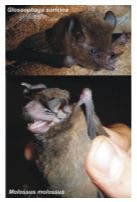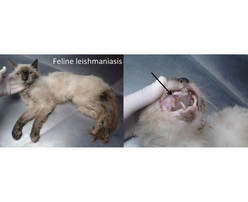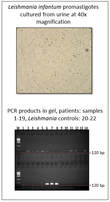Leishmaniasis is a disease caused by parasites in the genus Leishmania, which are transmitted to people via sandflies. It is endemic to many parts of the world, particularly developing countries and may cause organ failure or disfiguring damage to skin and cartilage. While in Brazil as a Fulbright grantee at the Federal University of Mato Grosso do Sul, I began an on-going collaboration with colleagues on Leishmania in wildlife, domestic animals, and clinical samples.
Findings So Far:
Leishmania in bats, Mato Grosso do SulWe made the first detection of Leishmaniasis braziliensis in bats and the first record of Leishmania in Mato Grosso do Sul. The bats belonged to two different species, Glossophaga soricina (top photo) found in a rural area and Molossus molossus (bottom photo) found within the city of Campo Grande. Read more here!
|
Leishmania in catsWhile dogs are recognized as particularly important reservoirs of Leishmania, recent reports of infected domestic cats in urban areas suggest they might also play a role in the epidemiology of leishmaniasis. We screened 100 domestic cats for Leishmania sp. infection in an area where human and canine visceral leishmaniasis are endemic. We detected Leishmania infantum in 6% of animals. This species responsible for visceral leishmaniasis in humans and other animals. This demonstrates the potential role of these animals in the biological cycle of the pathogen.
Read more here! |
Leishmania in urineThe gold standard for diagnosis has traditionally been visual detection of the parasite in bone marrow or spleen samples, but this is an invasive procedure that carries the risk of serious complications. As a less invasive alternative, we tested if Leishmania infantum could be detected in patient urine. We detected parasite DNA in 6/30 urine samples from patients with visceral leishmaniasis and isolated it in culture from one patient. This suggests urine samples could be used to diagnose visceral leishmaniasis, especially in acute cases or renal infection, providing a valuable tool for doctors and clinicians for screening and diagnosis of leishmaniasis. in patients.
Read more here! |



